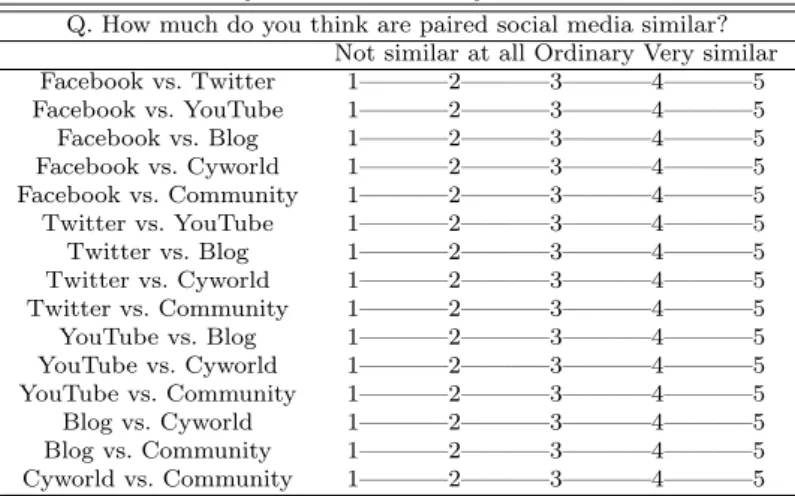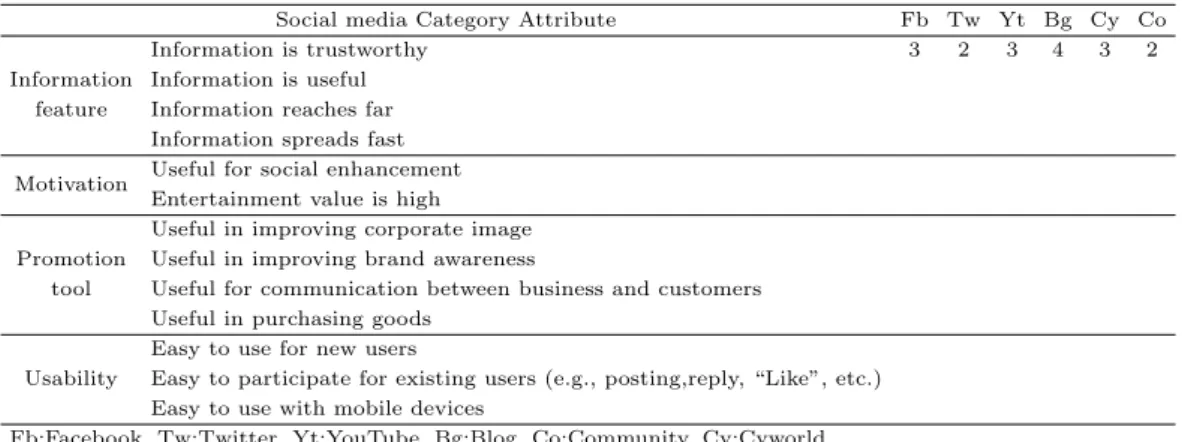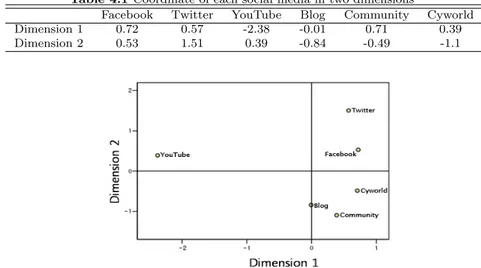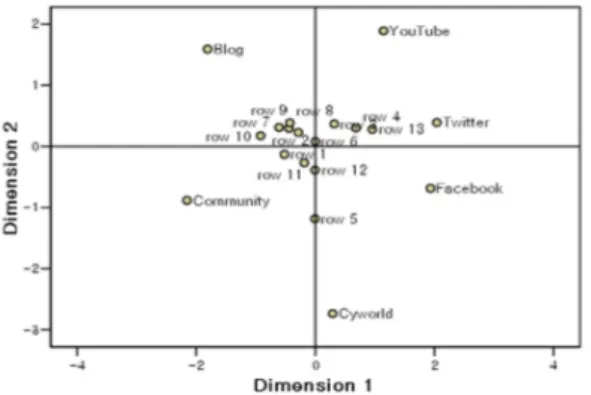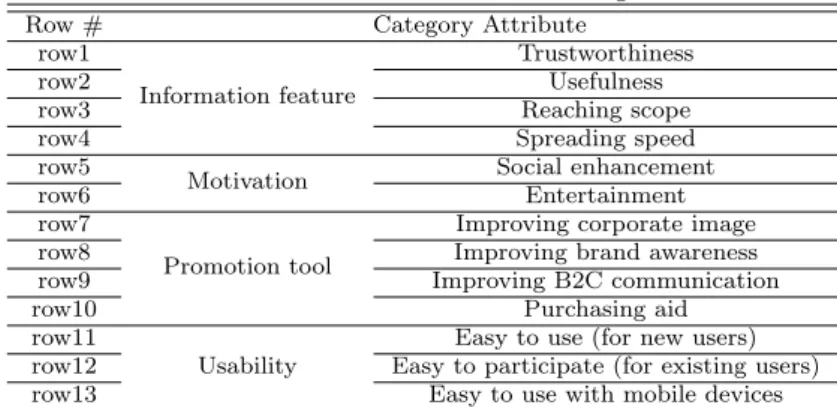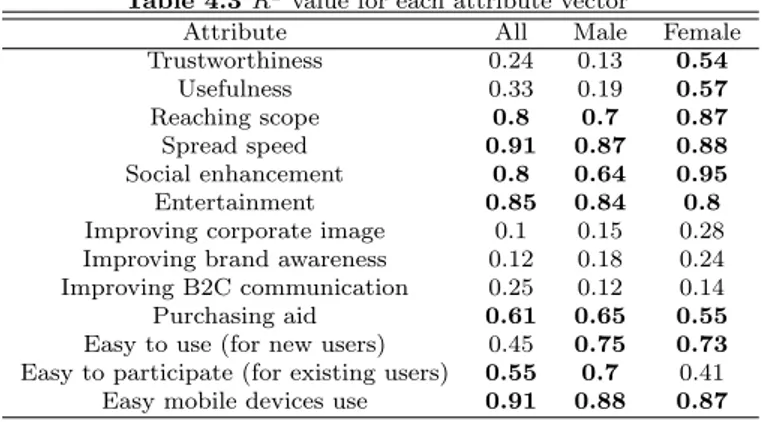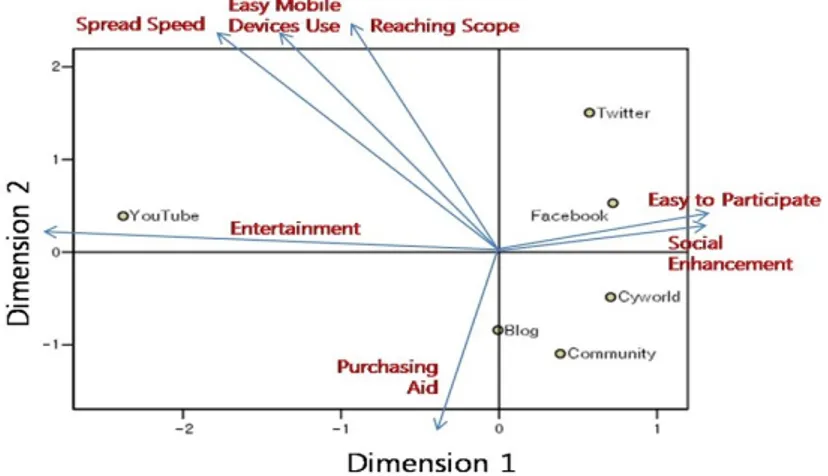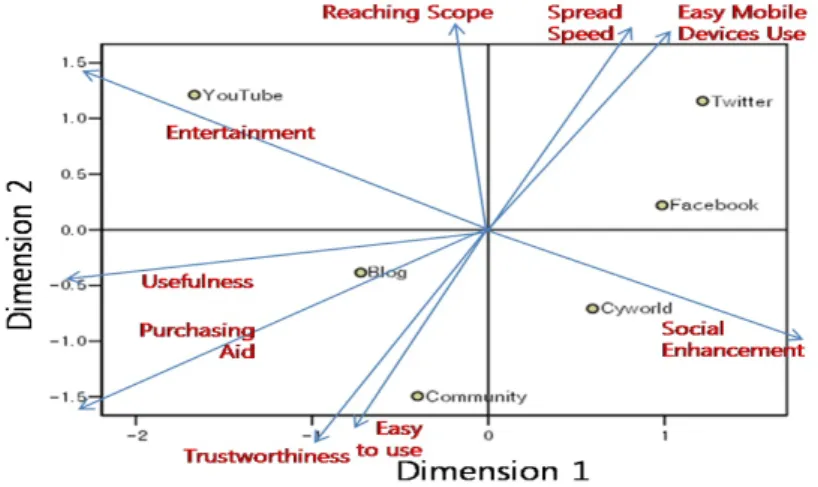Social media comparative analysis based on multidimensional scaling
Hanjun Lee 1 · Yongmoo Suh 2
12 Business School, Korea University
Received 2 April 2014, revised 18 April 2014, accepted 28 April 2014
Abstract
As social media draws attention as a business tool, organizations, large or small, are trying to exploit social media in their business. However, lack of understanding the characteristics of each social media led them to develop a naive strategy for dealing with social media. Thus, this study aims to deepen the understanding by comparatively analyzing how social media users perceive (the image of) each social media. Facebook, Twitter, YouTube, Blogs, Communities and Cyworld were chosen for our study and data from 132 respondents were analyzed using multidimensional scaling technique. The results show that there are meaningful differences in users’ perception of social media attributes, which are grouped into four; information feature, motivation, promotion tool, usability. It is also analyzed whether such differences can be found between male and female users. (Such differences are also analyzed in both male and female users’
perceptions.) Further, we discuss some implications of the research results for both practitioners and researchers.
Keywords: Image, multidimensional scaling, positioning map, social media.
1. Introduction
Social media is making a big wave. The explosively increasing number of social media users and huge amount of information disseminated through the social media are resulting in ripple effects on the whole world. Twitter is estimated to have more than 500 million users and generating over 340 million tweets per day (Wikipedia, 2012). Currently, there are more than 156 million public blogs in existence (Wikipedia, 2011). Facebook boasted 1.3 billion monthly active users worldwide by the end of 2013.
These trends affect how people interact with others and how people consume and share information (Surowiecki, 2004; Tapscott and Williams, 2006; Scoble and Israel, 2006). 96%
of Millennials (people born between ’82 and ’00 in the U.S.) have joined a social network, and social networking popularity surpassed e-mail popularity. News on Twitter spreads faster than those on CNN. People no longer search for news, products or services. The information itself will find them through social media.
1
Ph. D. candidate, Business School, Korea University, Seoul 136-701, Korea.
2
